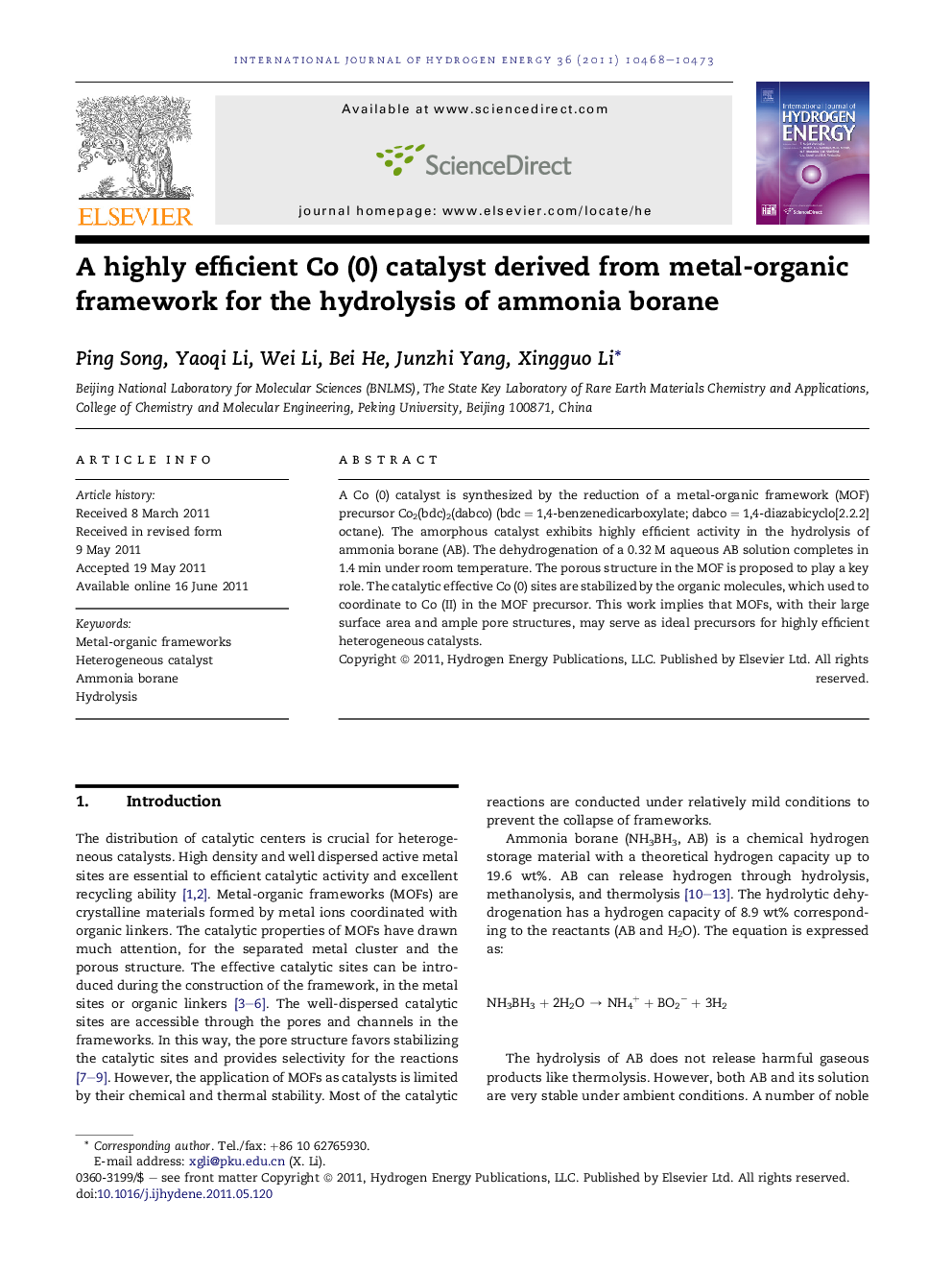| کد مقاله | کد نشریه | سال انتشار | مقاله انگلیسی | نسخه تمام متن |
|---|---|---|---|---|
| 1277512 | 1497576 | 2011 | 6 صفحه PDF | دانلود رایگان |

A Co (0) catalyst is synthesized by the reduction of a metal-organic framework (MOF) precursor Co2(bdc)2(dabco) (bdc = 1,4-benzenedicarboxylate; dabco = 1,4-diazabicyclo[2.2.2]octane). The amorphous catalyst exhibits highly efficient activity in the hydrolysis of ammonia borane (AB). The dehydrogenation of a 0.32 M aqueous AB solution completes in 1.4 min under room temperature. The porous structure in the MOF is proposed to play a key role. The catalytic effective Co (0) sites are stabilized by the organic molecules, which used to coordinate to Co (II) in the MOF precursor. This work implies that MOFs, with their large surface area and ample pore structures, may serve as ideal precursors for highly efficient heterogeneous catalysts.
Figure optionsDownload as PowerPoint slideHighlights
► The catalyst is synthesized by reduction from a metal-organic framework.
► The hydrolysis of ammonia borane is completed within 1.4 min at room temperature.
► The Co (0) sites are dispersed in the residue of the framework.
► The MOF based catalysts have much more broader applications.
Journal: International Journal of Hydrogen Energy - Volume 36, Issue 17, August 2011, Pages 10468–10473